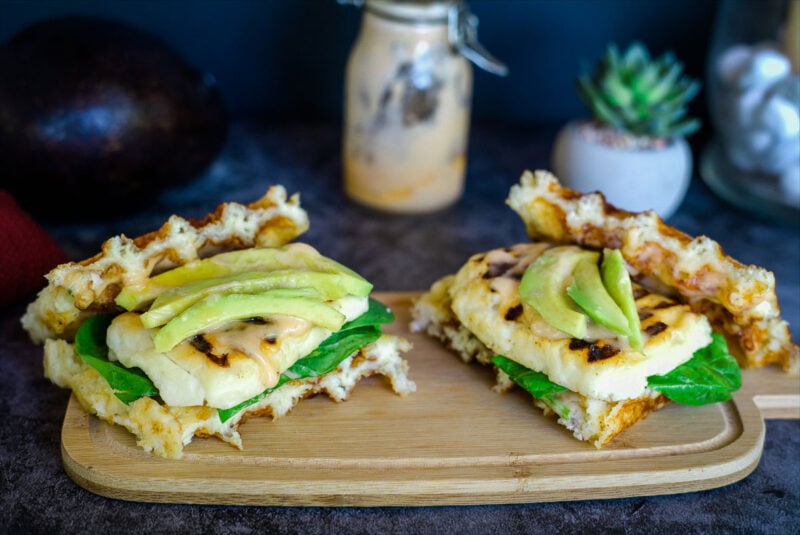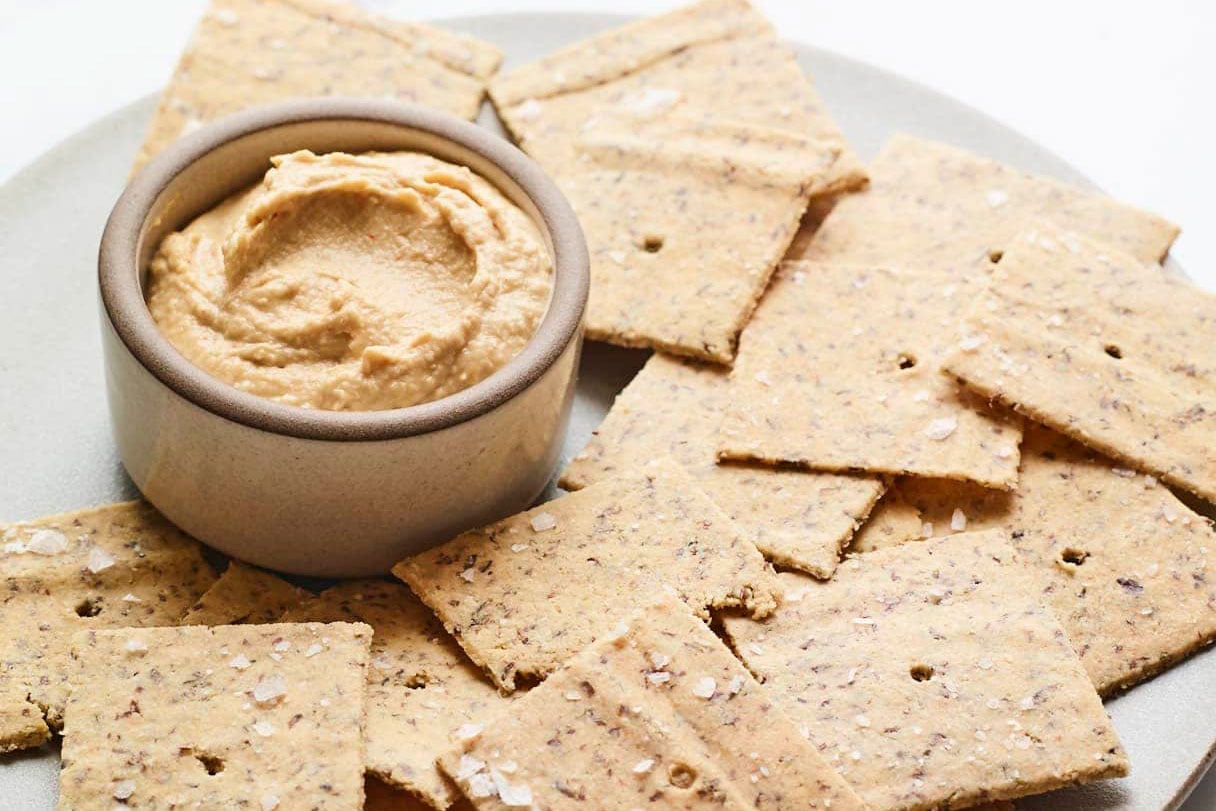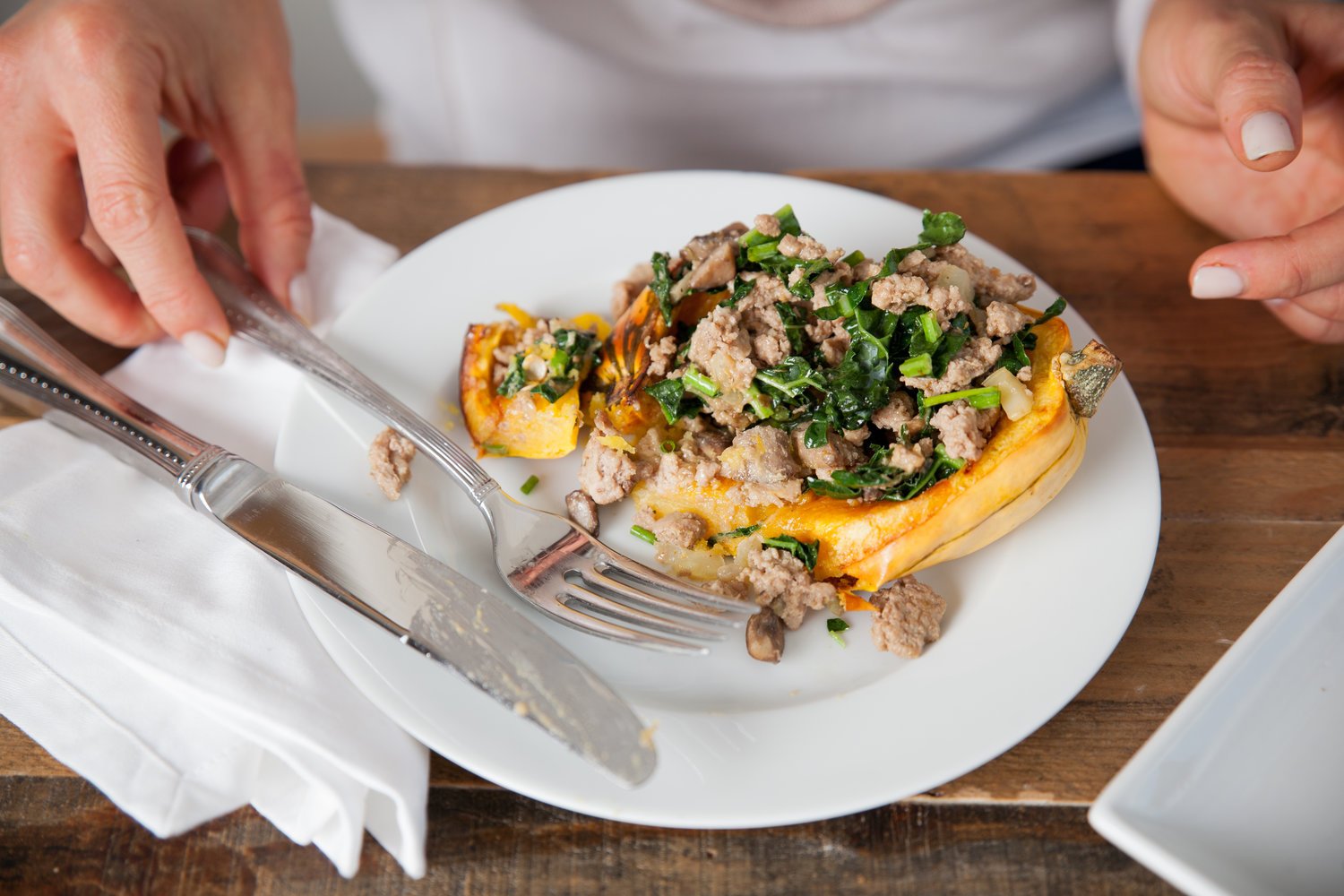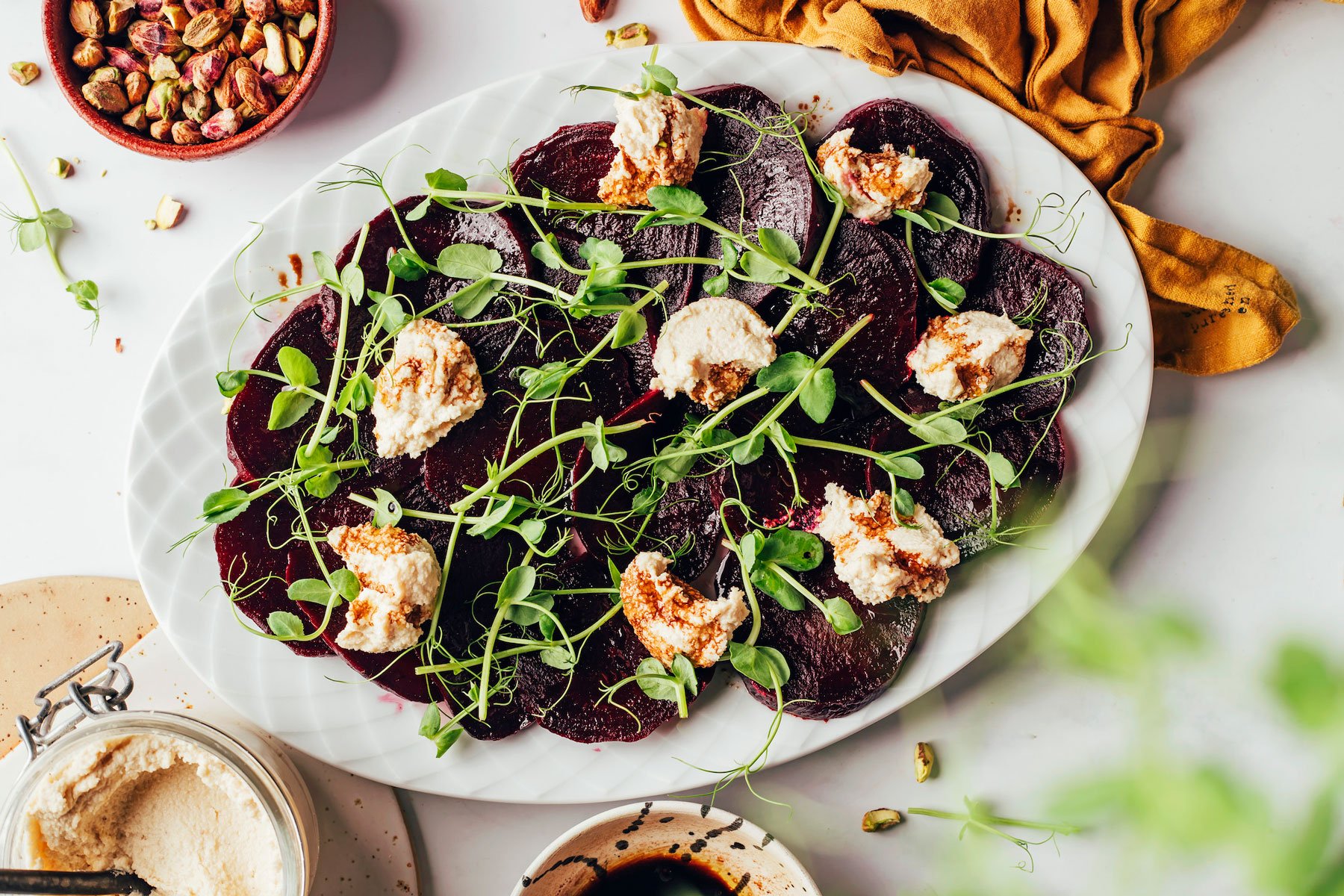Image courtesy Keto Vegetarian Recipes
Whether you identify as vegan, vegetarian, or plant-based, eating predominantly non-animal foods can benefit metabolic health. Some research suggests that plant-based diets may help prevent and treat metabolic syndrome, a combination of conditions that increase the risk of Type 2 diabetes, stroke, and heart disease.
At the same time, high-carb fare like pasta, sandwiches, and burrito bowls can all be plant-based—and spike your blood sugar. The key to vegetarian and vegan dishes that support metabolic health is to include beneficial foods (like vegetables, nuts, and low-sugar fruit) and avoid or limit processed foods that lack fiber and other vital nutrients.
Use the tips and recipes below to help you learn how to eat plant-based dishes that taste delicious and promote stable blood glucose.
Build a Better Plant-Based Dish
Vegetarian and vegan meals can be filling and flavorful—or they can be boring salads that leave you hungry an hour later. Here are tips for building a better veggie-based dish:
1. Eat the rainbow. The color of fruits and vegetables can indicate which beneficial phytonutrients they contain. Aim to consume a variety of colors in the course of your day to maximize your nutrient intake. For example, yellow and orange produce, like carrots and bell peppers, are rich in the antioxidant beta-carotene, which may reduce the risk of cardiovascular disease. And anticarcinogens like sulforaphane and isothiocyanates are often present in green fruits and vegetables.
2. Don’t skimp on essential nutrients. Healthy fats, protein, and fiber contribute to satiety and slow digestion, which regulates blood sugar responses, so include sources of these nutrients at every meal. Tofu, tempeh, beans, and lentils are excellent protein sources, while you can find both healthy fats and fiber in walnuts, chia seeds, flaxseeds, and avocados. Vegans and vegetarians may also fall short in critical metabolic micronutrients like omega-3s, vitamin D, and zinc.
3. Include an array of protein sources. Animal products are considered complete proteins because they contain all nine essential amino acids (EAAs) the body needs to synthesize protein. By contrast, most plants are incomplete proteins because they’re low or lacking in one or more of the essential amino acids. Fortunately, getting a complete amino acid profile is as easy as pairing different plant-based protein sources together. That could look like sprinkling sunflower seeds over hummus. Remember, combining different plant-based proteins doesn’t have to be at the same meal to get the benefits, just within the same day. Plus, some plants—like hemp seeds and soy products—are complete protein sources. Keep them on hand to add to your food whenever there’s a doubt.
4. Make smart swaps. Some plant-based meal staples can be high in refined carbs that spike blood sugar. Think pasta, stir-fries with rice, and even pizza. Seek alternatives like zucchini noodles or cauliflower rice, which support metabolic health.
5. Test your tolerance for grains and starchy vegetables. Everybody is different. Sweet potatoes may spike your blood sugar but cause a gradual response in your friend. To help you personalize your eating plan, consider using a continuous glucose monitor to see how you respond to higher-carb grains and starchy vegetables like quinoa, potatoes, and more. You may be able to consume them in moderation, paired with other foods.
Low-Carb Vegetarian Recipes
A vegetarian diet offers more flexibility in meals since it includes dairy and eggs, both of which provide satiating protein.
Breakfast
Start the day with a low-carb, protein-rich dish.
Egg in a Hole Peppers with Avocado Salsa
Thanks to bell peppers and tomatoes, this colorful spin on an egg-in-a-hole contains more than 100 percent of your recommended vitamin C, a powerful antioxidant. Avocado adds healthy fat and fiber, and jalapeño brings a nice kick.
Cottage Cheese Breakfast Bowl
Cottage cheese is having a moment for good reason: A half-cup of 2-percent cottage cheese provides about 12 grams of protein, and, like other fermented dairy products, it may help regulate blood sugar and insulin levels. Chia seeds, flaxseed oil, and walnuts provide some omega-3 fatty acids, while naturally low-sugar frozen berries lend the right touch of sweetness.
Egg Breakfast Egg Muffins
Make these in bulk and freeze them for later to have a solid meal on any busy morning. This recipe uses bell pepper, spinach, spring onions, and cheddar cheese, but you can add any vegetable or cheese. Try to avoid pre-grated cheeses, as they can contain additives like carrageenan, which may cause gut inflammation, according to animal studies.
Lunch
These midday ideas promote stable blood sugar so you can say so long to the afternoon slump.
Keto Halloumi Sandwich
Halloumi is a sturdy cheese that doesn’t fall apart or melt when cooked, making it an excellent, chewy substitute for meat in sandwiches. If you’re going to use mayo, opt for one made with avocado oil to avoid those seed oils that contain potentially inflammatory omega-6 fatty acids.
Keto Club Salad
This salad skips the traditional bacon and chicken and doubles down on hardboiled eggs and cheese to deliver almost 17 grams of protein. If you crave a crunchy topping rather than refined croutons, sprinkle on nuts or seeds.
Greek-Style Superfood Bowl
This recipe uses thoughtful additions to take Greek salad to the next level. Pumpkin and sunflower seeds add crunch, healthy fats, and fiber. Choose spinach or another dark leafy green like kale for your base—these have more nutrients than lettuce.
Dinner
Even meat eaters will love these saucy, spicy, and cheesy vegetarian dinner ideas.
Eggplant Lasagna
Zucchini noodles are great, but thinly sliced eggplant works instead of lasagna noodles. The trick is to salt the eggplant and let it sit for a few minutes to release moisture—and you don’t wind up with watery lasagna. Build this with a no-sugar, store-bought marinara sauce to cut your workload in half.
Tempeh Tomato Vegetable Soup
This spin on tomato soup adds a healthy serving of tempeh, a great source of vegan protein.
Consider serving this soup with something to sop up the extra broth, like a side of cauliflower rice, a low-carb bread, or even a vegan grilled cheese.
Zucchini Noodle Pasta Primavera
This dish is already loaded with carrots, red bell pepper, broccoli, and tomato—then you use both zucchini and yellow squash as your “noodle” base. All of that adds up to various antioxidants to fight free radicals that can cause oxidative stress. Up the protein with tempeh, tofu, or a meat alternative like Abbot’s Butcher ground meat.
Low-Carb Vegan Recipes
As these recipes prove, cutting out animal products entirely leaves you with various creative, flavorful meals to create. It does, however, make getting enough protein a challenge, so we’ve suggested adds where appropriate.
Breakfast
Though breakfast may be synonymous with bacon and eggs, you don’t need them to make a hearty morning meal.
Vegan Curry Tofu Scramble
When ground or crumbled into small pieces, tofu becomes the perfect substitute for scrambled eggs. A touch of curry powder gives the dish the classic yellow color. Then, add any vegetables you have left over in the crisper drawer.
Chickpea Flour Pancakes
Pancakes don’t have to be sweetened to be delicious, nor do they have to contain that many carbs. This recipe calls for chickpea flour (also called gram flour), which has 11 fewer carbs per quarter-cup than white flour and lends an earthy, nutty flavor. Add a tofu scramble side to up the protein.
Easy 4-Ingredient Chia Pudding
Try a prep-ahead recipe like this one to make breakfast easier. Simply mix chia seeds, almond milk, and vanilla extract (mix well to avoid clumps) and let it sit overnight in the fridge. Wake up to a meal with 13 grams of fiber. Omit the maple syrup and try topping this with berries. Boost the protein with a Levels-approved protein powder.
Chocolate Coconut Smoothie
Pick a Levels-approved protein powder to ensure your smoothie has the best metabolic health benefits. This recipe also uses MCT (medium-chain triglyceride) oil, a chain of fatty acids associated with greater fat loss. But coconut oil contains the same compounds and makes a great substitution.
Lunch
With a bit of thought, all-plant salads, soups, and sandwiches can be filling, just like these recipes are.
Thai Salad with Cabbage and Peanuts
This salad is about as colorful as it gets, thanks to an array of nutrient-rich vegetables like cabbage, cucumber, and red bell pepper. Chopped peanuts and peanut butter add a fair dose of healthy fats, fiber, and protein to boot. Sprinkle on some edamame to get more protein.
Vegetable Soup
Vegetable soups let you use up produce that you’d otherwise throw away, so get creative with this recipe. If you can, though, include the kale, which packs about 70 to 90 percent of your daily vitamin K in one raw cup. We need K for blood clotting and bone health. Potential protein add: diced baked tofu or silken tofu.
Dinner
End the day with a satisfying supper that won’t leave you in a food coma.
Tofu Stir-Fry
Unlike many plant proteins, tofu contains all nine essential amino acids, making it a “complete” protein. This dinner is ready in 15 minutes thanks to its use of a bagged vegetable mix, but you can always chop your own produce if you prefer. Looking for a gluten-free option: try gluten-free tamari.
Vegan Beanless Chili
Baby portabella mushrooms and walnuts add the rich, meaty texture and flavor you’d typically get from beef to this recipe. Both also contain selenium, a mineral that promotes glucose absorption. This recipe is still pretty low in protein, so consider a ground meat alternative, tempeh, or Pumfu (a pumpkin-seed-based protein). If you like your chili with beans, just watch the portion size and add a salad before the meal to offset any potential glucose spike.
Cauliflower Veggie Pizza
Homemade cauliflower crust takes some work, but the result is worth it if you’re craving pizza. Top yours with no-sugar-added tomato sauce, any vegetables, and a zesty DIY pesto (that’s also great on spiralized veggies and to dip crudité). Add some protein and flavor by topping with roasted or pan-fried tempeh.
 See how what you eat affects your metabolic health
See how what you eat affects your metabolic health
The best way to understand how recipes like these can improve your blood sugar is with a continuous glucose monitor and an app like Levels to help you understand your data. Levels members get access to the most advanced CGMs and personalized guidance to build healthy, sustainable habits. Click here to learn more about Levels.









